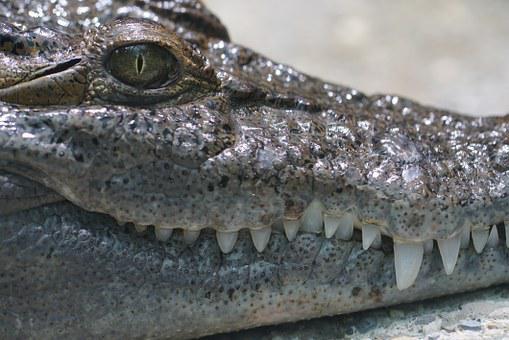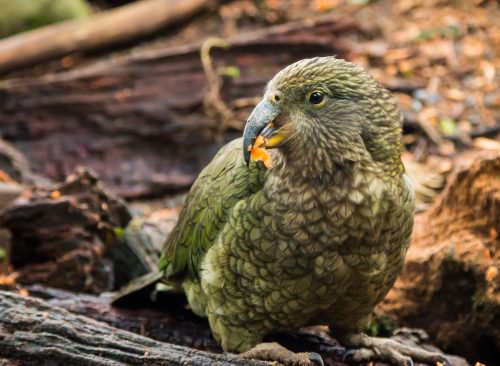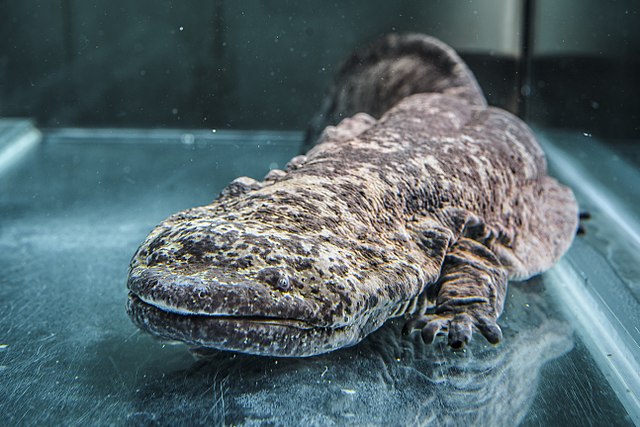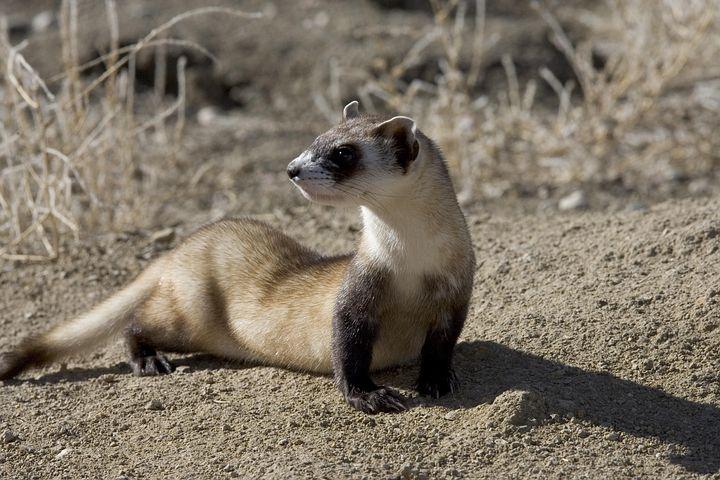As temperatures and conditions change, animals must either evolve or encounter a number of difficulties to their existence. Many animals around the globe, both past, and present have experienced problems such as habitat loss, overhunting, and illness. In this article, we’ll look at the top twenty-three rarest creatures in the world that may still be seen in the wild. All of the world’s rarest species are critically endangered and urgently require conservation, or they would be gone forever.
1. Vaquita
- Scientific Name: Phocoena sinus
- Type of Animal: Mammals
- Diet: Carnivore

The vaquita is the world’s most endangered animal, with only a few hundred left in the wild. Currently, this porpoise can only be found in the Gulf of California, namely in the extreme northwestern section of the water body. Since 1997, when the population was recorded to be 567, the population has dropped to its current level of 18 individuals. Unless anything is done, the vaquita will certainly become extinct within a decade.
In contrast to other species, mature females give birth on average every two years, which is twice as long as the norm for other species. Despite the fact that other potential threats have been discovered, the unrestricted use of gill nets for commercial fishing has proven to be the single most fatal factor for vaquitas in recent history. Two studies found that boats from a single port were responsible for the deaths of 7-15 percent of the vaquita population in a single year, according to the findings of both researches.
These species are all on the edge of extinction, and it is possible that it is already too late for some of them to be saved in time. Despite efforts, the survival of these species in the wild continues to be a major challenge due to extremely fragmented populations and a decreasing number of mature individuals. The majority of these species have a limited or non-existent population in captivity, which makes them difficult to breed. This makes it even more critical than ever to understand the difficulties that some of our planet’s most endangered animals confront, and to consider what we might be able to do to assist them.
2. Javan Rhinoceros
- Scientific Name: Rhinoceros sondaicus
- Type of Animal: Mammals
- Diet: Herbivore

It is only possible to see the Javan rhinoceros in a single nature park on the island of Java, where it is considered to be a rare Indonesian rhinoceros. No other herds exist because the species has become extinct across its former range, and this preserve is home to the maximum number of animals that can be supported by the habitat, which is 68.
At present moment, it is anticipated that just 18 fully adult humans are capable of reproducing on their own. The Javan rhino is under threat from poaching for its horn for resale and traditional Asian medicine, which is the greatest severe hazard to the species. The presence of a palm known as langkap, which is toxic to this species, is a significant threat to its survival. There are no other species of vegetation that can survive in this environment, including the rhinos’ favorite food source, because of the presence of this palm.
3. Red Wolf
- Scientific Name: Canis rufus
- Type of Animal: Mammals
- Diet: Carnivore

The red wolf is the only animal from North America to appear on our list of the world’s most endangered species, and it is also one of the most endangered animals on the planet. This species had been declared extinct in the wild by 1980, but the United States government reintroduced it into the wild in 1987 in Eastern North Carolina.
The reintroduction was so successful that more than 150 animals were able to establish themselves in the region. Because of the rapid development, there have been concerns about cross-breeding with coyotes as well as disagreements with nearby landowners. The federal government limited the scope of the programme because of the tensions to just federal assets and preserves in the state’s easternmost reaches as the result of the tensions. There is just enough room for a pack of mature adults in this location, which has a total population of 30 individuals. The estimated population is expected to be lower than that amount and to be decreasing now.
4. Sumatran Rhinoceros
- Scientific Name: Dicerorhinus sumatrensis
- Type of Animal: Mammals
- Diet: Herbivore

They have decreased in population by over 80% in the previous 30 years due to poaching and habitat degradation, with barely 30 adult individuals living in viable colonies. Sumatran rhino population groups are extremely scattered, making it hard to bring many of them together at the same time. It seems improbable that small groups of two to five rhinoceroses will be saved, even with the best conservation efforts, and the largest known group of rhinoceroses comprises just 15 adult rhinoceroses.
5. Gobi Bear
- Scientific Name: Ursus Arctos Gobiensis
- Type of Animal: Mammals
- Diet: Carnivore

The Gobi bear is a brown bear subspecies that can only be found in Mongolia’s Gobi Desert, which is home to the world’s largest desert. In the wild, there are less than 40 full-grown adult Gobi bears surviving, and none of them are held in captivity. This bear is a strong and unyielding scavenger that manages to thrive in a climate with an annual rainfall of fewer than four inches in this region. Grazing by other animals and habitat loss due to mining in the region have both had a significant influence on Mongolian grasslands in the past, resulting in a significant impact on all species that live in the region.
Furthermore, a 14-year drought during which less than two inches of rain fell per year resulted in a major reduction in the Gobi bear’s available food source. The bears’ last three habitats have been combined into a single large national park, and researchers have tagged 20 adult bears to keep track of the population’s movements.
6. Saola
- Scientific Name: Pseudoryx nghetinhensis
- Type of Animal: Mammals
- Diet: Herbivore

It is related to cattle, although it has more in common with deer in appearance and behavior. Known as the Asian unicorn because of their rarity and mystery, they are highly sought for. It was only in 1992 that the saola was discovered in the evergreen forests of Vietnam, and no research to ascertain their population size has ever been successful due to the deep forests of Vietnam and the political turmoil in Laos at the time of discovery.
Dietary depletion and overhunting to fulfill local demand for bushmeat and medicinal sources are two of the most serious threats to the saola population. Because the saola is so seldom photographed with trap cameras, researchers assume that there are no longer any viable herds of the animal remaining. There are no saola in captivity, and wild populations range from 25 to 750 mature individuals, depending on the location.
7. Addax
- Scientific Name: Addax nasomaculatus
- Type of Animal: Mammal
- Diet: Herbivore

The addax is a kind of antelope that used to wander the African deserts before becoming domesticated. They are presently only found in the Termit Tin Toumma region of Niger, where they have become extinct. Thousands of addaxes are kept in captivity in various preserves around the world, whereas the wild population is estimated to number only 30-90 mature individuals at any given time. An increase in oil drilling in their native habitats, as well as political instability, has resulted in an even greater influx of armed humans into the region.
8. Amur leopard
- Scientific Name: Panthera Pardus Orientalis
- Type of Animal: Mammals
- Diet: Carnivore

The Amur leopard is found in the Amur region of Russia and China. Its population has increased from an estimated 14 adults in 2005 to around 84 mature individuals now, a growth that may be attributed almost completely to the species’ spotted fur. Even if the establishment of a preserve in the Russian Far East region has supported the species’ recent recovery, a paucity of prey will prevent them from returning to their former habitat. It can run at 37 mph and jump 19 feet horizontally, as well as 10 feet straight up into the air. This extraordinary leopard weighs 75-100 pounds and can jump 10 feet straight up into the air.
9. Philippine Crocodiles
- Scientific Name: Crocodylus mindorensis
- Type of Animal: Reptiles
- Diet: Carnivore

There are no signs of improvement for the Philippines’ crocodiles, who are suffering in comparison to the kakapo. The species is widely scattered over the inland wetlands of the Philippine Islands, with an estimated mature adult population of 92-137 individuals in a decreasing state. The biggest specimen ever caught in the wild was less than nine feet in length, indicating that this crocodile is less in stature than its relatives are. As adults, they mostly eat fish, pigs, dogs, and ducks, although they also consume other animals.
10. Kakapo
- Scientific Name: Strigops habroptilus
- Type of Animal: Brid
- Diet: Herbivore

In New Zealand, the kakapo is a nocturnal, flightless parrot with a lifespan of 60 years that is native to the country. The colonization of the island country by humans, as well as the subsequent introduction of cats into the region, caused widespread devastation among the Kakapos. The parrot is believed to be extinct in its natural habitat. Following the implementation of a government-sponsored conservation and translocation program, the species’ population has been steadily growing in recent decades.
Over the three smaller islands of New Zealand, there are presently 116 mature individuals to be found in total. Conservators tag and track all of the adults in the region, which is practically completely protected by the National Park Service. The use of genetic testing and supplementary feeding of breeding-age individuals resulted in considerable increases in the rate of birth and overall survival of breeding-age individuals.
11. Hainan Gibbon
- Scientific Name: Nomascus hainanus
- Type of Animal: Mammals
- Diet: Omnivore
The beautiful Hainan gibbon is threatened by poaching and habitat degradation, and there are just 25 individuals left, making it the world’s most endangered primate and the world’s most endangered primate. The Baw angling National Nature Reserve in China’s Hainan Island is the only place where you may observe one in its natural habitat. This is the home of the last remaining population, which is isolated to a single place within the forest and can only be reached by foot.
12. Gorilla
- Scientific Name: Gorilla gorilla
- Type of Animal: Mammals
- Diet: Omnivore

Despite the fact that the mountain gorilla population has increased in recent years as a result of WWF conservation efforts, witnessing a mountain gorilla in the wild is still a rare and exciting sighting. This is largely owing to the gorillas’ distance and the high cost of travelling to see them, as well as other factors. Few people prefer to travel to the Democratic Republic of the Congo, while those who value security will opt for a journey to Rwanda or Uganda, where permits cost more than US$500 per hour and are difficult to get. It is, nevertheless, well worth the money spent on it. As the largest of the great apes, seeing these monkeys in their natural habitat is a fascinating experience, especially considering that they share over 98 percent of their genetic code with humans.
13. Bamboo Lemur
- Scientific Name: Prolemur simus
- Type of Animal: Primate
- Diet: Herbivore

The larger bamboo lemur is the largest of the bamboo lemurs, and it is the last of its species to exist in Madagascar’s south-eastern region. The white tufts that protrude from its ears may recognize it. Until a colony of this critically endangered monkey was discovered in the late 1980s, experts believed the species to have died out completely. In reality, there are only around 500 of these gregarious animals remaining on the earth, and they tend to live in groups of up to 28 other individuals.
14. Hector’s Dolphins
- Scientific Name: Cephalorhynchus hectori
- Type of Animal: Mammals
- Diet: Carnivore

Hector’s dolphins are not only the world’s most endangered dolphins, but they are also the world’s tiniest marine dolphins. They are exclusively found in the seas surrounding New Zealand’s North Island, and their tiny, husky bodies and unusual facial traits distinguish them from other dolphins. The present population of the species is believed to be roughly 7,000 individuals, with certain subspecies having as few as 55 individuals.
15. Hispaniolan Solenodon
- Scientific Name: Solenodon paradoxus
- Type of Animal: Mammals
- Diet: Carnivore

The Hispaniolan solenodon is notable not just for its rarity, but also for its status as one of the last living members of a lineage of shrews that coexisted with the dinosaurs and is one of only a few mammals capable of generating venom. Despite its historic past, the solenodon has faced a serious challenge since European colonization introduced rats and other predators into its natural environment, putting the species’ survival at risk.
In part because of its low reproductive rate (about two litters of one to three newborns each year), the solenodon is considered critically endangered, making it one of the world’s most endangered animals. In spite of the fact that particular population numbers are unavailable, the solenodon only covers a small section of Haiti, spanning just 100 square kilometers in size.
16. White-Winged Flufftail
- Scientific Name: Sarothrura Ayresi
- Type of Animal: Bird
- Diet: Carnivore

The white-winged flufftail is a little bird that can only be found in Ethiopia’s highland marshes and grows to a maximum size of 14 to 15 cm. It is a threatened species in Ethiopia. The unfortunate fact is that cattle grazing on their native grazing grounds, as well as the draining of local wetlands, has led in a significant fall in their population, which is currently estimated to be around 700 individuals worldwide.
17. El Rincon Stream Frog
- Scientific Name: Pleurodema somuncurense
- Type of Animal: Amphibians
- Diet: Carnivore
The El Rincon stream frog can only be found on an isolated plateau in Patagonia, Argentina, and it is a critically endangered species. It seeks refuge in thermally heated springs to protect itself from the subzero temperatures that prevail on the plateau. A creature with a population of less than five square kilometres, the El Rincon is extremely rare, as one would anticipate from a creature with such a small range. Unfortunately, the construction of dams and the introduction of non-native species into their rivers have resulted in a severe reduction in the population of El Rincon, which now exists at levels that are much lower than its historical values. There is just one plateau in Patagonia, Argentina, where it may be found now.
18. Chinese Giant Salamander
- Scientific Name: Andrias davidianus
- Type of Animal: Amphibian
- Diet: Carnivore

The Chinese giant salamander is one of just three remaining species of huge salamander on the earth, and it is the largest of the three. It’s no surprise that it’s been nicknamed a “giant” because it can grow to reach around two meters in length, with the tail accounting for over 60% of its total length. Unfortunately, water pollution and the consumption of the giant salamander as a delicacy in China have put the species’ survival in peril. The enormous salamander is classed as “very unusual,” with “few surviving populations,” despite the fact that precise population estimates are hard to make due to the salamander’s extremely low population numbers.
19. Northern Darwin’s Frog (Chile Darwin’s Frog)
- Scientific Name: Rhinoderma rufum
- Type of Animal: Amphibians
- Diet: Carnivore
Darwin’s frog is only found in two locations on the planet and is named after Charles Darwin, who discovered the species of fox in 1834 and was the first person to do so in the globe. It is believed that they now inhabit on the Chilean island of Chiloe, where they may also be found in the Nahuelbuta National Park. Darwin’s fox can be found out and about between the hours of dusk and morning. The Darwin’s fox is considered a “umbrella species,” which implies that saving them would help to protect the rest of the habitat as well. It is threatened by habitat loss as well as hunting-related deaths.
- Giant Squid
- Scientific Name: Architeuthis dux
- Type of Animal: Cephalopod (Invertebrate)
- Diet: Carnivore

The Giant Squid is again another of the most endangered animals that we will discuss. Despite their enormous size, giant squids are not as massive as they appear: the largest giant squid ever discovered was around 43 feet (13 metres) in length and weighed nearly one ton. You would think that a beast of this size would be difficult to detect, but apparently not. However, due to the vastness of the ocean and the fact that massive squid live deep beneath the surface, they are elusive and rarely seen; much of what we know about them comes from dead bodies that float to the surface and are discovered by fishermen. The body of a colossal squid looks to be rather straightforward: Like other squids and octopuses, it has two eyes, a beak, eight arms, two feeding tentacles, and a funnel, among other characteristics (called a siphon). However, of course, everything is significantly larger! It is possible for giant squid to capture prey from up to 33 feet (10 meters) away by extending its two feeding tentacles, which are tipped with hundreds of powerful sharp-toothed suckers and can catch them in their nets. Each of these feeding tentacles is extraordinarily long, and they may easily double or perhaps triple the length of the giant squid on their own.
21. White-Rumped Vulture
- Scientific Name: Gyps bengalensis
- Type of Animal: Brid
- Diet: Carnivore

The white-rumped vulture is the most critically endangered of the three vulture species, and it is on the verge of extinction. With a population that has decreased by 99 percent since the 1980s, this bird has earned the unpleasant distinction of being the “fastest vanishing bird species.” Inhabitants of the Indian subcontinent, white-rumped vultures have been designated as critically endangered since 2000. Their decline may mostly be attributed to the introduction of the pharmaceutical Diclofenac, a veterinary non-steroidal anti-inflammatory drug that has been found in cow carcasses and is thought to be responsible for the decline. When the vultures eat on the cows, they consume the poison, which causes them to suffer from renal failure as a result.
22. Giant Otters
- Scientific Name: Pteronura brasiliensis
- Type of Animal: Mammals
- Diet: Carnivore

Giant otters, well, they are enormous creatures. They are the largest otter species in the planet, reaching up to six feet in length. Gigantic otter populations are restricted to southern and Central America, and they were once hunted for their pelts, which led to their demise. Fortunately, you no longer have the ability to hunt them, but their natural habitats are at risk of being destroyed. When the rivers and lakes where they live are depleted of fish, their food supply is completely depleted as well. Despite their lovely look, large otter populations in the area are considered a nuisance by fishermen.
Are Any of the Rarest Animals in the World Also Among the Deadliest?
Are any of the rarest animals in the world also among the deadliest? The answer is yes. Some of the most elusive and endangered species are indeed deadly. From the venomous Inland Taipan snake to the powerful and aggressive saltwater crocodile, these deadly animals worldwide embody both rarity and danger.
23. Black-footed ferrets
- Scientific Name: Mustela nigripes
- Type of Animal: Mammals
- Diet: Carnivore

These weasels, who are members of the weasel family, are an exceptional illustration of how conservation efforts may help rescue animals from extinction by preserving their natural habitat. In the late 1980s, a captive-breeding effort to increase the number of black-footed ferrets was carried out with the assistance of 18 ferrets. Approximately 300–400 wild black-footed ferrets exist today, all of which are descended from the initial 18 ferrets. Because their principal food source, prairie dogs, is becoming increasingly rare, as well as the fact that humans are destroying their natural habitats, they are still on the edge of being extinct.









